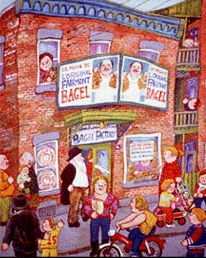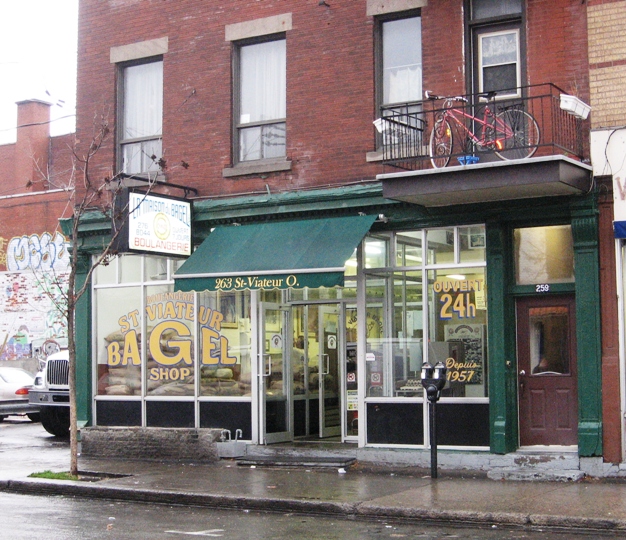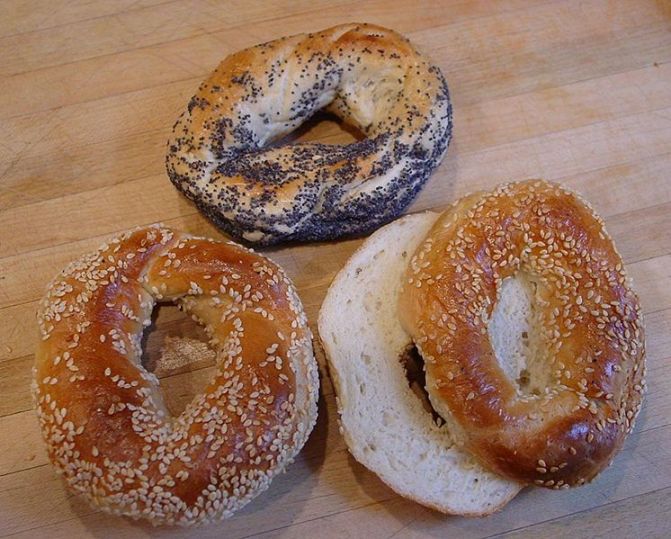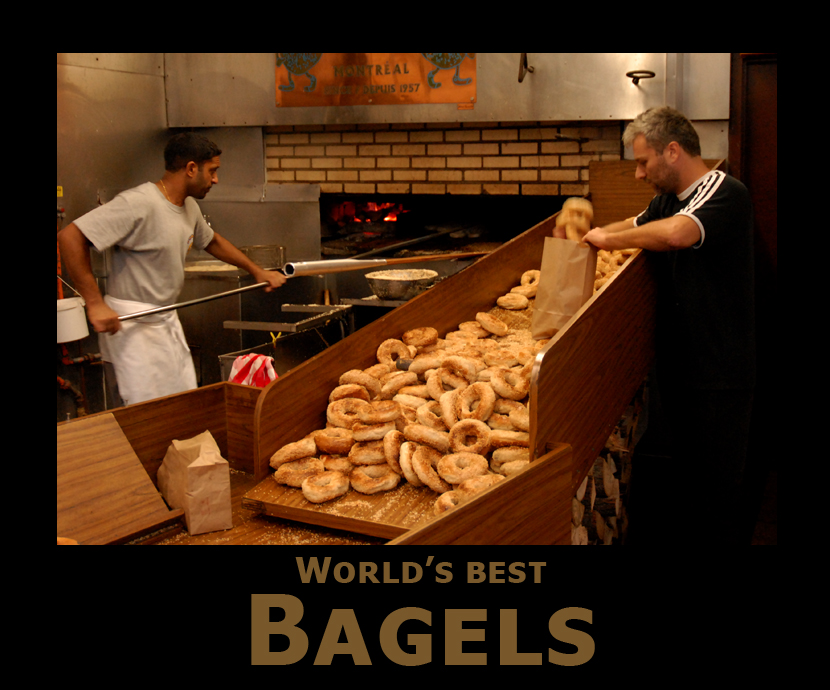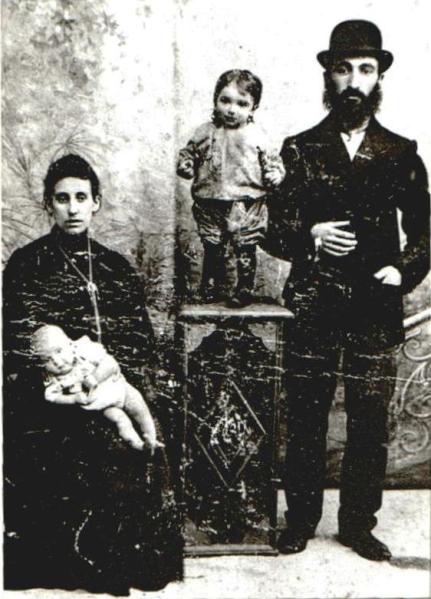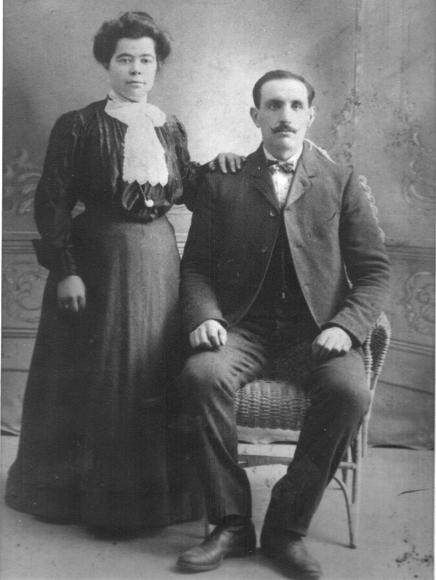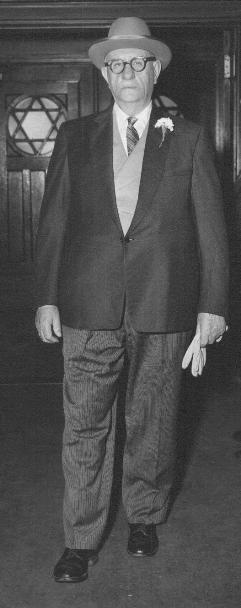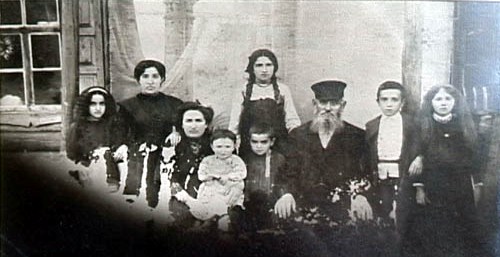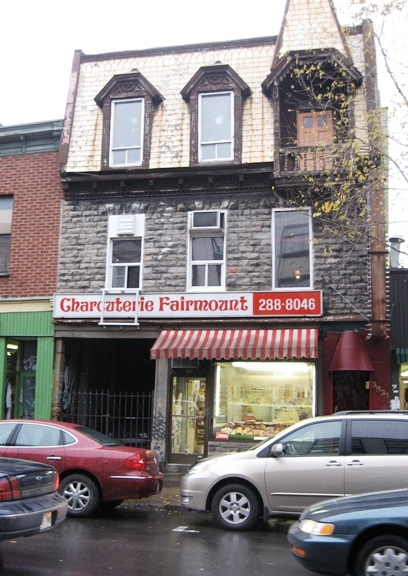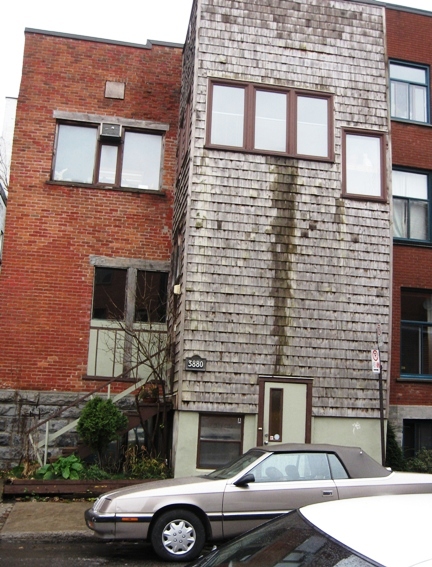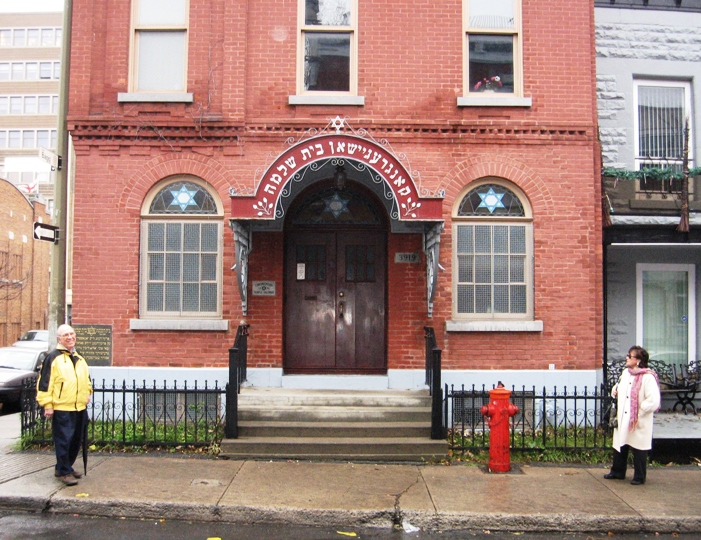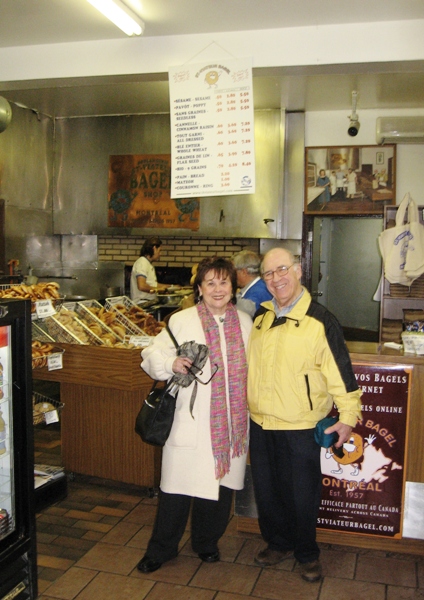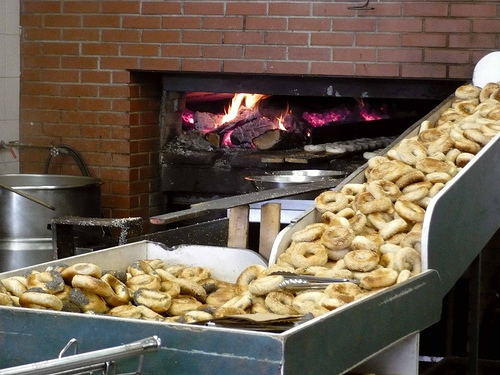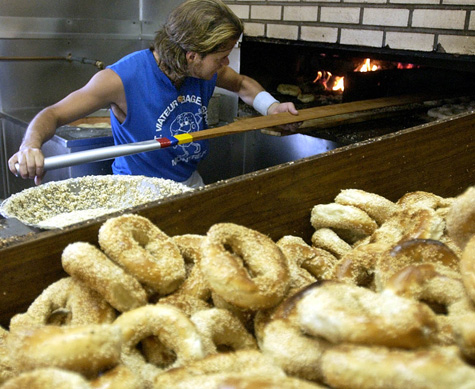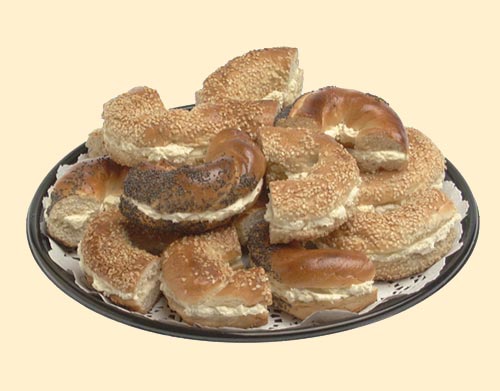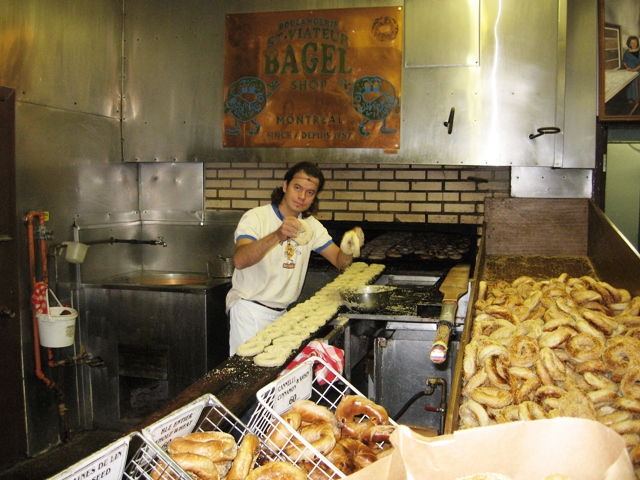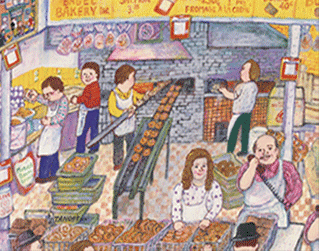
The Montreal Bagel is claimed to be the best in the world and who are we to challenge what is clearly verifiable truth!
Montreal Bagels may be similar in shape to other bagels (the use of the capital in the Montreal variety is no oversight), the difference being in the texture and the taste, probably reflecting the Bagels produced back in the Seligman (Zelikman) home in Dvinsk and Slobodka.
Montreal Bagels, however, are a different breed, chewy and tinged with a tantalizing sweetness. The real thing is still baked in wood ovens, which give the Bagels an irregularly charred outer surface. With no chemical additives or dough conditioners, these Bagels stand out in gastronmic genius, velvety texture and shiny good looks.
Montreal Bagels may be similar in shape to other bagels (the use of the capital in the Montreal variety is no oversight), the difference being in the texture and the taste, probably reflecting the Bagels produced back in the Seligman (Zelikman) home in Dvinsk and Slobodka.
Montreal Bagels, however, are a different breed, chewy and tinged with a tantalizing sweetness. The real thing is still baked in wood ovens, which give the Bagels an irregularly charred outer surface. With no chemical additives or dough conditioners, these Bagels stand out in gastronmic genius, velvety texture and shiny good looks.




The Bagel King of Montreal
Hyman Seligman & the Great Montreal Bagel
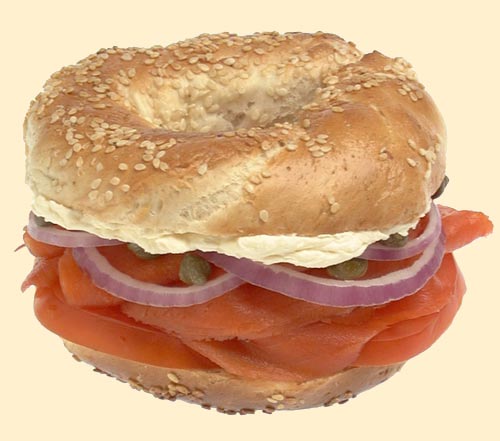
Fairmount Bagel in Jewish Main, Montreal

In contrast to the machine made New York-style bagel, Montreal Bagels are hand prepared from a strip of dough that has been formed into a circle and rolled on the seam, producing a Bagel that is smaller, sweeter, denser and with a larger hole. The Bagel contains malt, egg, no salt; is boiled in honey-sweetened water and then dipped in poppy-seed (mohn) or sesame before being baked in a wood-fired oven. The irregular flames of the wood give it a dappled light-and-dark surface colour with a gloss imparted by their swim in a bath of honey water.
A minor controversy exists concerning who introduced the Bagel to Montreal but as far as the Seligman clan is
A minor controversy exists concerning who introduced the Bagel to Montreal but as far as the Seligman clan is
The Real McOy - Montreal Bagels
St. Viateur Bagel Shop
concerned it was Chaim (Hyman) Seligman, a fact verified by Joe King, the historian of Montreal Jewry. Chaim first worked in the neighbourhood of Lachine and later moved his Bagel bakery to the lane next door to Schwartz's Deli on St. Lawrence Boulevard in central Montreal. Chaim would string his Bagels into dozens and patrol Jewish Main purveying his ware originally from a pushcart, then a horse and wagon and lastly from a converted taxi.
Chaim went into partnership with Myer Lewkowicz and with Jack Shlafman but managed to fall out with both. Chaim and Myer founded the St. Viateur Bagel Shop and Jack established Fairmount Bagel, both existing until today. Though founded by Lewkowicz, the current owner of St. Viateur is Joe Morena - an Italian. You don't have to be Jewish to make the perfect Bagel!
Chaim went into partnership with Myer Lewkowicz and with Jack Shlafman but managed to fall out with both. Chaim and Myer founded the St. Viateur Bagel Shop and Jack established Fairmount Bagel, both existing until today. Though founded by Lewkowicz, the current owner of St. Viateur is Joe Morena - an Italian. You don't have to be Jewish to make the perfect Bagel!

Chaim Zelikman was born in 1878, the first son of David Meyer Zelikman, probably from Dvinsk, a large fortress city on the Dvina River in Czarist Russia (now Daugavpils in Latvia). Life in the Pale of Settlement was not easy and Chaim, together with his brother Mendel, left for the welcoming shores of Canada at the turn of the twentieth century - changing his name to Seligman. Settling originally just off Jewish Main (St. Lawrence Boulevard), Chaim started to bake Bagels for a living, firstly for the Jews living in Lachine and later from premises in a small lane near Schwartz's Deli.
Chaim married Freda Ulmeschik, who bore four children before dying during childbirth in 1918. Chaim later remarried to Chana (Anna) Dozorchov-Herman, whose first husband had been murdered in a pogrom in Russia. Chaim's eldest son, Harry, married Chana's daughter Bertha, making understanding the Canadian Seligman family tree a convoluted affair.
David Meyer also remarried and moved with his new wife, Sara Leah Swartzman, to the village of Slobodka (today in Belarus) where
Chaim married Freda Ulmeschik, who bore four children before dying during childbirth in 1918. Chaim later remarried to Chana (Anna) Dozorchov-Herman, whose first husband had been murdered in a pogrom in Russia. Chaim's eldest son, Harry, married Chana's daughter Bertha, making understanding the Canadian Seligman family tree a convoluted affair.
David Meyer also remarried and moved with his new wife, Sara Leah Swartzman, to the village of Slobodka (today in Belarus) where
David Meyer with his First Wife, Chaim and Mendel -Dvinsk c.1880
Chaim Seligman with Chana Dezorchov-Herman-Seligman
Chaim (Hyman) Seligman

Chaim (Hyman) Seligman
he established a grocery. We will never know if he baked Bagels there but a photograph dated around 1910 shows David Meyer and his new family in front of their home. Behind their heads, a string of bagels hangs inside the window.
The Zelikman (Seligman) Family in Slobodka - c. 1910
Note the String of Bagels in the Window
Note the String of Bagels in the Window
The Original Seligman Bagel Bakery
The Home of Chaim (Hyman) Seligman off St. Lawrence
Beit Shlomo Congregation in Montreal's Jewish Main
Miriam and Cecil in the Bagel Shop
The History of the Bagel
The origin of the bagel is somewhat clouded in history. Legend has it that in 1683, a Jewish baker in Vienna created a small bread in the form of a stirrup ('beugel' in German) as a present for King Jan III Sobieski (1629 - 1696) of Poland for coming to the aid of the Holy Roman Empire (Hapsburgian Austria) against the invading Turks and in honour of his great horsemanship. During the Battle for Vienna the Polish-Austrian-German forces led by King of Poland Jan III Sobieski defeated the army of the Ottoman Empire commanded by Grand Vizier Merzifonlu Kara Mustafa Pasha. Less glorious explanations simply attribute the Bagel to the German variations of the word 'beigel', meaning 'ring', or 'bugel', meaning bracelet.
The origin of the bagel is somewhat clouded in history. Legend has it that in 1683, a Jewish baker in Vienna created a small bread in the form of a stirrup ('beugel' in German) as a present for King Jan III Sobieski (1629 - 1696) of Poland for coming to the aid of the Holy Roman Empire (Hapsburgian Austria) against the invading Turks and in honour of his great horsemanship. During the Battle for Vienna the Polish-Austrian-German forces led by King of Poland Jan III Sobieski defeated the army of the Ottoman Empire commanded by Grand Vizier Merzifonlu Kara Mustafa Pasha. Less glorious explanations simply attribute the Bagel to the German variations of the word 'beigel', meaning 'ring', or 'bugel', meaning bracelet.
The Battle of Vienna and the Bagel
The Battle of Vienna - The ring-like shape of the City of Vienna probably inspired the Jewish Baker in his invention of the Bagel
Leopold I, by the grace of God, Emperor of the Holy Roman Empire, King of Germany, Hungary, and Bohemia; Archduke of Austria, Duke of Burgundy, Margrave of Moravia, Count of Tyrol offering victory Bagel to Jan III, by the grace of God, King of Poland, Grand Duke of Lithuania, Ruthenia, Prussia, Masovia, Samogitia, Livonia, Smolensk, Kiev, Volhynia, Podlasie etc., after the defeat of the Ottoman army of the Grand Vizier Merzifonlu Kara Mustafa Pasha in the Battle of Vienna on September 12, 1683.
Note the Jewish officer wearing a schtreimel (probably a Seligman ancestor) behind King Jan Sobeiski staring at the newly aquired gift and already dreaming of a Monh (poppy seed) Bagel with cream cheese and laks.
Note the Jewish officer wearing a schtreimel (probably a Seligman ancestor) behind King Jan Sobeiski staring at the newly aquired gift and already dreaming of a Monh (poppy seed) Bagel with cream cheese and laks.
In Leo Rosten's 'The Joys of Yiddish' it is noted that the first printed mention of bagels came even earlier, in 1610, in the Community Regulations of Krakow. Here it is stipulated that bagels are to be offered to new mothers upon the birth of a child, the circular shape being regarded as a symbol of the continuous life cycle and good luck. Bagels were also used as nutritious teething rings that babies could easily chew. In Russia Bagels, sold at market stands and on city streets, were said to bring happiness because of their circular form.
The basic ingredients are flour, malt flour, sugar, eggs, oil, yeast and water. The dough is mixed and kneaded and placed on a long table where a Bagel man (referred to as 'the roller') cuts the large dough into maneuverable strips that he rolls around his hand to create a circular ring. These rings are then placed into simmering honey water for about four minutes, allowing the dough to rise and moisten; to add a subtle sweetness to the dough; to allow the sesame or poppy seeds to stick more easily before the Bagels are placed in the oven and lastly to give the Bagels a beautiful sheen or glaze.
After the Bagels have been boiled, the baker retrieves them from the kettle with a strainer and dips the steaming hot Bagels into sesame or poppy seeds. The Bagels are then placed on two long, wooden bakers peels or paddles with beveled edges, called a 'sheeba'. that are slipped into the wood-burning oven, which reaches temperatures exceeding 700 degrees centigrade. After about 4 minutes, the Bagels are flipped onto the oven's brick floor. Because of the oven's heat fluctuations, the Bagels must be skillfully shifted with the sheeba. Mastering a 'sheeba' requires years of training. The Bagels are baked for twenty minutes before the baker tosses them into a large wooden bin. Eat them hot or add a filling of your own choice!
Bagels - The Original Chaim Seligman Method as Used in the St. Viateur Bagel Shop till Today
The Wood Fired Oven and Bagel Bin
Expert Sheeba Manipulation
The Bagler, the Oven, the Sheeba and the Experience

Baking Your Own Montreal Bagels
First Stage:
Build wood fired oven. Preparation time - a few days.
Second Stage:
Baking 18 Bagels. Preparation time: 45 minutes. Cooking time: 25 minutes 1 1/2 cups water, room temperature 2 packages dry quick-rising yeast (or 1 1/2 ounces fresh yeast), 1 teaspoon sugar, 2 1/2 teaspoons salt, 1 whole egg, 1 egg yolk, 1/4 cup oil, 1/2 cup honey, 5 cups or more flour (preferably bread flour), 3 quarts water for boiling 1/3 cup honey or malt syrup, sesame or poppy seeds for sprinkling on top.
1. In a large mixing bowl or in the bowl of an electric mixer that has a dough hook, blend together the water, yeast, sugar and salt. Stir in the whole egg, the yolk, oil and 1/2 cup honey, and mix well.
2. Add the 5 cups flour, and mix until the dough is too stiff to mix by hand. Transfer to a lightly floured work surface (if using electric mixer, attach dough hook), and knead to form a soft, supple dough. Add a bit more flour as needed to prevent dough from getting too sticky.
3. When the dough is smooth and elastic, place it in a lightly oiled bowl, and cover with a sheet of plastic wrap or with a plastic bag.
4. Let the dough rest about 20 minutes. Punch it down, and divide into 18 equal portions. Pour the water into a Dutch oven, along with the remaining half cup honey or malt syrup, and heat to boiling. Cover, reduce the heat, and allow to simmer while preparing the bagels.
5. Shape the dough portions into bagels or doughnutlike rings by elongating each portion into an 8- to 10-inch coil that is 3/4 inch thick. Fold the ends over each other, pressing with the palm of one hand and rolling back and forth gently to seal. This locks the ends together and must be done properly or the bagels will open while being boiled. Let the bagels rest 15 minutes on a towel-lined baking sheet.
6. Preheat oven to 450 degrees. Bring the water back to a boil and remove the lid. Have bowls of poppy seeds and sesame seeds nearby.
7. When the water is boiling, use a slotted spoon, and add three bagels to the water. As they rise to the surface, turn them over, and let them boil an additional minute before removing them and quickly dipping them in either bowl of the seeds. Continue boiling the bagels in batches of three until all have been boiled and seeded.
8. Arrange the boiled bagels on a baking sheet, and bake on the lowest rack of oven until they are medium brown, approximately 25 minutes. Remove from the oven. Once cooled, the bagels can be placed in a plastic bag, sealed and frozen.
Note: If not using the dough immediately, refrigerate it after it has been kneaded. Bagel making can be resumed up to a day later. Allow the dough to return to room temperature, and continue with step 4.
Es gezunterheyt
First Stage:
Build wood fired oven. Preparation time - a few days.
Second Stage:
Baking 18 Bagels. Preparation time: 45 minutes. Cooking time: 25 minutes 1 1/2 cups water, room temperature 2 packages dry quick-rising yeast (or 1 1/2 ounces fresh yeast), 1 teaspoon sugar, 2 1/2 teaspoons salt, 1 whole egg, 1 egg yolk, 1/4 cup oil, 1/2 cup honey, 5 cups or more flour (preferably bread flour), 3 quarts water for boiling 1/3 cup honey or malt syrup, sesame or poppy seeds for sprinkling on top.
1. In a large mixing bowl or in the bowl of an electric mixer that has a dough hook, blend together the water, yeast, sugar and salt. Stir in the whole egg, the yolk, oil and 1/2 cup honey, and mix well.
2. Add the 5 cups flour, and mix until the dough is too stiff to mix by hand. Transfer to a lightly floured work surface (if using electric mixer, attach dough hook), and knead to form a soft, supple dough. Add a bit more flour as needed to prevent dough from getting too sticky.
3. When the dough is smooth and elastic, place it in a lightly oiled bowl, and cover with a sheet of plastic wrap or with a plastic bag.
4. Let the dough rest about 20 minutes. Punch it down, and divide into 18 equal portions. Pour the water into a Dutch oven, along with the remaining half cup honey or malt syrup, and heat to boiling. Cover, reduce the heat, and allow to simmer while preparing the bagels.
5. Shape the dough portions into bagels or doughnutlike rings by elongating each portion into an 8- to 10-inch coil that is 3/4 inch thick. Fold the ends over each other, pressing with the palm of one hand and rolling back and forth gently to seal. This locks the ends together and must be done properly or the bagels will open while being boiled. Let the bagels rest 15 minutes on a towel-lined baking sheet.
6. Preheat oven to 450 degrees. Bring the water back to a boil and remove the lid. Have bowls of poppy seeds and sesame seeds nearby.
7. When the water is boiling, use a slotted spoon, and add three bagels to the water. As they rise to the surface, turn them over, and let them boil an additional minute before removing them and quickly dipping them in either bowl of the seeds. Continue boiling the bagels in batches of three until all have been boiled and seeded.
8. Arrange the boiled bagels on a baking sheet, and bake on the lowest rack of oven until they are medium brown, approximately 25 minutes. Remove from the oven. Once cooled, the bagels can be placed in a plastic bag, sealed and frozen.
Note: If not using the dough immediately, refrigerate it after it has been kneaded. Bagel making can be resumed up to a day later. Allow the dough to return to room temperature, and continue with step 4.
Es gezunterheyt
Copyright © 2008 Jon Seligman. All Rights Reserved.
Sources:
1) Joe King. Baron Byng to Bagels: Tales of Jewish Montreal. Montreal. 2006 Pp. 42-3
2) St. Viateur Bagel - the Bagel Legend
3) The Schmooze - Bagel History.
1) Joe King. Baron Byng to Bagels: Tales of Jewish Montreal. Montreal. 2006 Pp. 42-3
2) St. Viateur Bagel - the Bagel Legend
3) The Schmooze - Bagel History.
